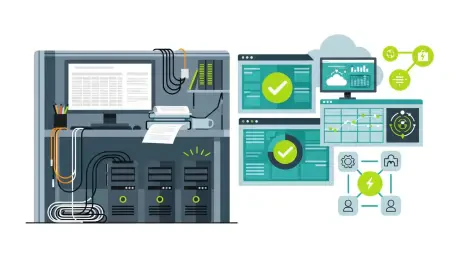Market oversight kept climbing while playbooks stayed stuck in the past, and the result was a widening gap between regulatory expectations and the tools many financial firms still leaned on to defend themselves. A new industry snapshot put numbers to that tension, showing how tightened scrutiny from the SEC, NYDFS, and FINRA collided with manual workflows and fragmented systems to create real fatigue among compliance teams. The pivot regulators signaled has been unmistakable: policies and attestations no longer suffice without timely, verifiable evidence behind them. That shift reshaped priorities from policy drafting to proof generation, exposing where legacy infrastructure and skills shortfalls left firms vulnerable. When rule interpretations changed quickly and audits demanded defensible artifacts at speed, slower, spreadsheet-era approaches faltered.
Evidence, Not Promises
A study of more than 300 U.S. financial services leaders found the center of gravity moving from policy intent to audit-ready proof, and it documented the strain that followed. Among respondents, 42% named fast-moving rule changes as the top challenge, while 36% pointed to missing expertise. Despite that pressure, 54% still tracked controls in spreadsheets or home‑grown tools, compounding human error and slowing examiner response. The research also surfaced a telling split in internal priorities: 53% of CFOs ranked evolving regulations as a top concern, compared with 38% of CIOs, a gap that hindered funding for automation and the integration work needed to standardize evidence flows. Roughly half of firms remained on legacy or on‑prem systems, which fell short of transparency and resiliency requirements that supervisors increasingly treat as table stakes.
The same leaders signaled where investment was headed: data discovery led planned initiatives at 51%, followed by automated evidence collection at 45% and document management at 45%. Those choices aligned with a core lesson from recent examinations—that cybersecurity and compliance are inseparable and must be demonstrated continuously, not merely asserted annually. The survey covered family offices, RIAs, wealth managers, hedge funds, private equity, and advisers with AUM from $10 million to more than $10 billion, underscoring that pressure cut across firm size and model. Modernization emerged as the pragmatic path: managed compliance platforms, continuous monitoring, and automated artifact capture reduced cycle time and fatigue while strengthening the defensibility of controls. In audits, speed to evidence increasingly defined resilience as clearly as incident prevention once did.
From Readiness to Repeatability
The operational story behind those numbers revealed systemic misalignment. Finance teams watched penalty exposure and disclosure rules tighten, yet technology teams juggled backlogs of security upgrades, cloud migrations, and data lineage projects. That disconnect left compliance officers stitching together artifacts from ticketing tools, email threads, and file shares, only to repeat the exercise at each audit. Moreover, on‑prem deployments and bespoke scripts resisted the kind of standardized control mappings regulators now expect across identity, endpoint, and vendor risk. In contrast, platforms that normalized logs, mapped policies to controls, and auto‑collected screenshots and configs gave firms a baseline of repeatability. That translated into fewer after‑hours sprints, clearer ownership, and a data trail auditors could verify without argument.
The path forward had been practical rather than grandiose. Firms that defined a narrow control set for automation, aligned CFO and CIO incentives around audit readiness, and replaced spreadsheets with systems of record saw measurable gains within quarters. Managed services filled skill gaps without long hiring cycles, while continuous monitoring closed the window between control drift and detection. Critically, evidence pipelines were treated like any other production workload—versioned, tested, and observable—so exam responses became reproducible runs, not bespoke hunts. That approach reduced burnout, cut remediation dwell time, and positioned boards to ask better questions about residual risk. In the end, resilience was recast as the ability to prove, on demand and without drama, that controls existed, operated, and stood up to scrutiny.









